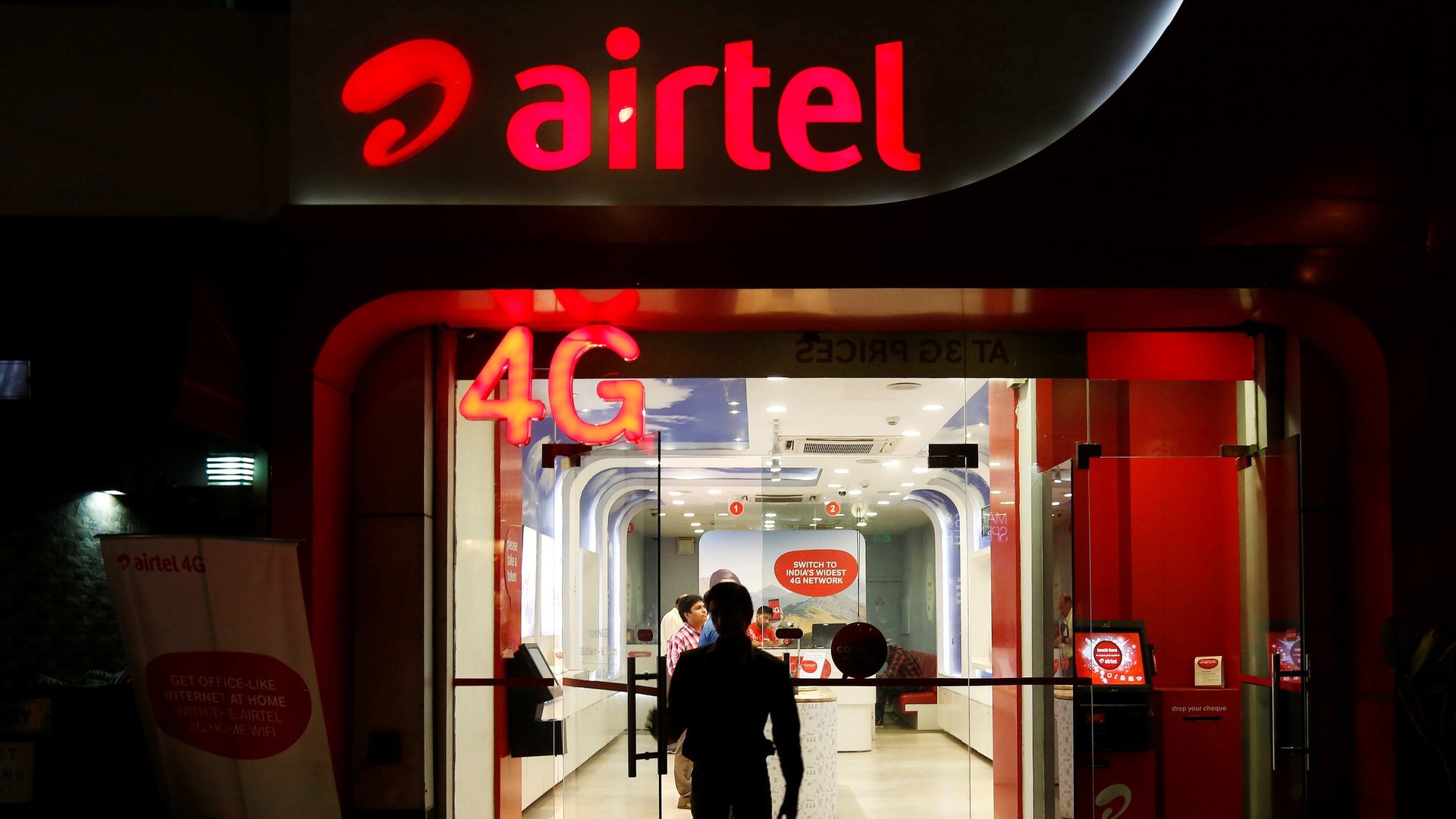Airtel’s tariff hike may mark the end of cheap mobile plans in India
This post has been updated.


This post has been updated.
The acche din (good days) of cheap tariffs may be ending for Indian mobile phone users.
On Nov. 22, India’s second-largest telecom company, Bharti Airtel, announced a hike in tariffs for its prepaid customers. A day later, Vodafone Idea, or Vi, followed suit. On November 29, Reliance Jio announced a 21% increase in prepaid tariffs effective Dec. 1, 2021.
“The increases indicate a fundamental shift towards higher overall user tariffs. These will enable telcos to invest in capital expenditure to improve existing network quality as well as future investments towards 5G network,” said Tushar Shah, director at research and analytics firm CARE Advisory.
The increase has been around 20% on average, with entry-level plans now costing around 25% more. The move, while necessary for the companies struggling for survival, will increase the burden on consumers.
Following the hike, the cheapest Airtel or Vodafone plan, including data, will cost 99 rupees ($1.33)—it stood at around Rs75 earlier.
Over the years, India has had among the world’s 30 cheapest average call and data rates. As of August, the least expensive was in Israel at $8, as per Cable, an internet comparison platform. India had the 28th spot.
How the tariff hike will help Airtel, Vi?
The companies haven’t surprised industry analysts with the tariff hike. Some believe it was inevitable given their precarious finances, particularly since Reliance Jio’s arrival in 2016.
For the September quarter, Airtel reported a loss of Rs763 crore. Likewise, Vi reported a consolidated net loss of Rs7,132 as compared to Rs7,218 crore in the last year period.
“Mobile tariffs in India have been economical and lower than global benchmarks but are not sustainable for the stressed telcos…the tariff hike was long overdue and Airtel took the lead in rebalancing its tariffs,” Charu Paliwal, research analyst at market research firm Counterpoint Research, had explained.
“Vodafone Idea has always maintained tariff hike is absolutely needed and it may help the telco in its fund-raising process.”
However, the firms’ average revenue per user (ARPU), a major area of focus for them going forward, has been constantly improving.
“The telecom industry is gathering pace towards increasing overall user tariffs to achieve the ARPU levels of around Rs200 over the medium term. The current ARPU of the top three telcos had averaged at Rs135 for the quarter ending September 2021,” Shah of CARE Advisory pointed out.
For Reliance Jio, on the other hand, ARPU has been on a slide, though the Mukesh Ambani-led firm is already making huge profits and remains the market leader.
Reliance Jio joins the spree
Reliance Jio, already with a strong customer base of around 400 million, has taken the opportunity provided by the hike by older rivals and increased its prepared rates by up to 20%.
At the lower end, Jio’s Rs75 plan will cost Rs91 from Dec. 01. The Rs2,399 plan, on the other hand, will cost Rs2,879 next month onward.
Analysts had earlier warned that the telco’s newly-migrated users could be in for such a shock.
Paliwal had suggested, however, that given Reliance’s growing footprint in the internet space and its revenues, besides its expanding rural presence, a price hike may not dent it much.
“It would be a boost for the whole sector,” he had said.